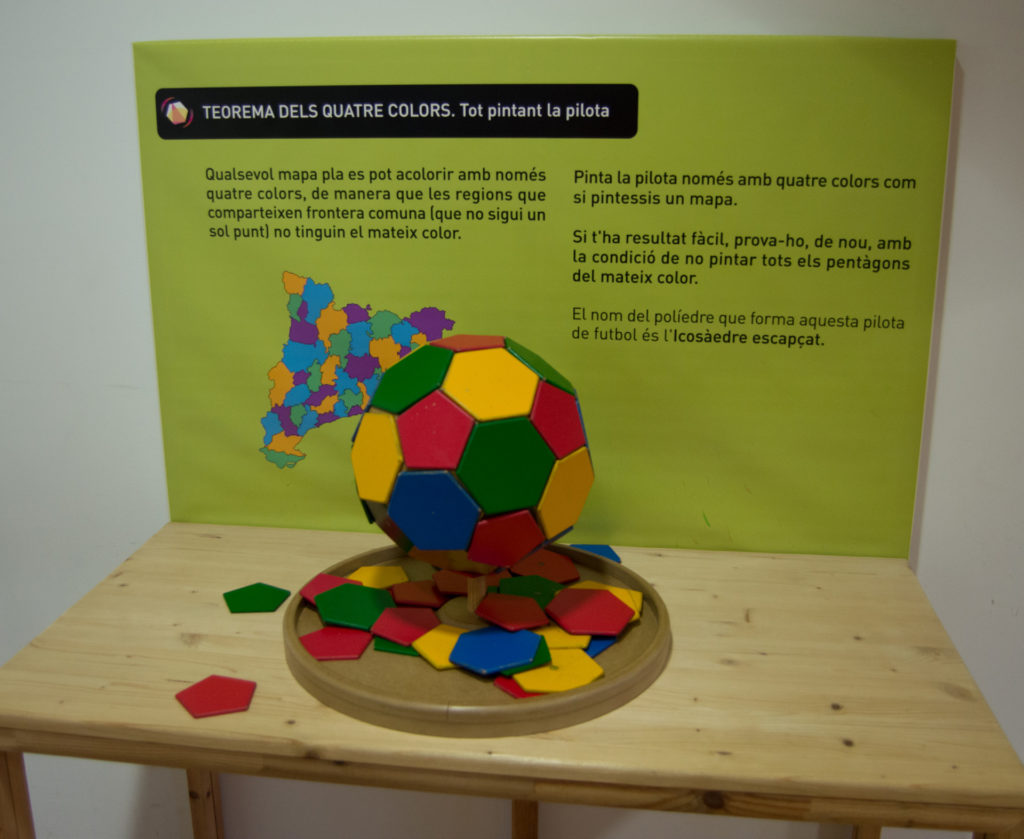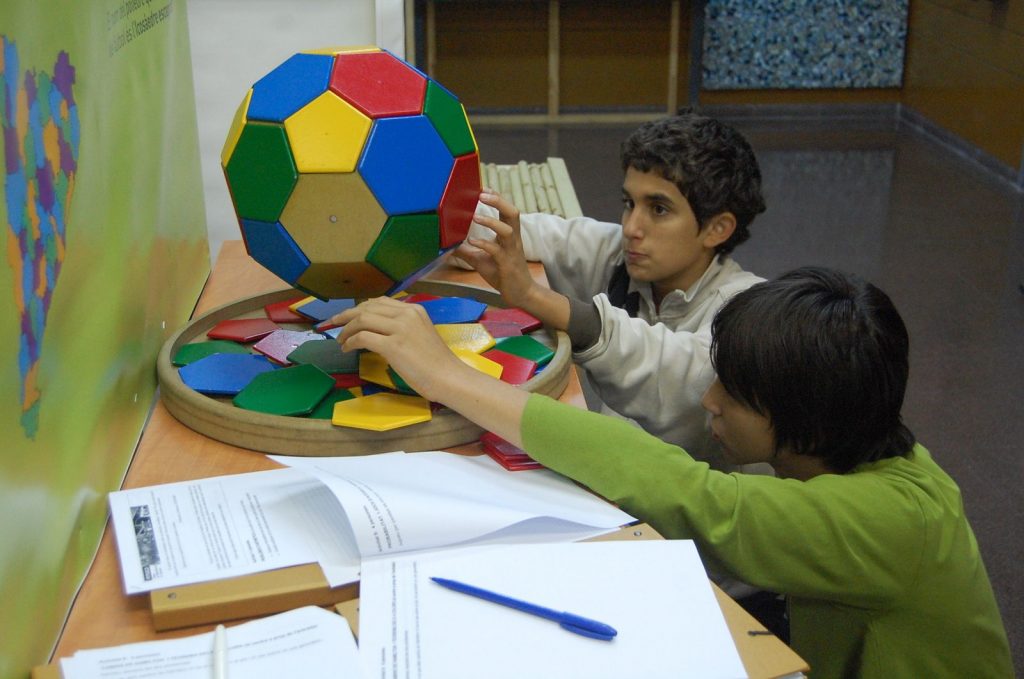Cover the ball without touching the colors
It is about putting the yellow, red, green and blue pieces around the polyhedrel subject to the polyhedrel magnets without the colors touching. We will have checked the 4 color theorem.
- Hotel Area: Sala Martin Gardner
- Minimum age: from 6 years old.
- Required time: 5-10 minutes.
- Number of participants: One or more people
- Keywords: 4 color theorem, computational geometry.
- Taxonomy: TOPOLOGY


A little math
The Four Colored Theorem
The four-color theorem states that four colors are always sufficient to color any flat map so that colors are not touched, except, perhaps, in corners.
It was tested in 1976 using, for the first time in a mathematical demonstration, a computer program.
In this module the surface to be covered with colored regions is not flat, it is a sphere. So we could ask ourselves: Is the 4-color theorem valid on a sphere?
The answer is yes, it is enough to think that on any map of regions on a sphere we can make a hole inside a country and imagine that we stretch the surface of the sphere from that hole as if it were rubber until we leave it flat with the country we have drilled located outside. Then the 4-color theorem assures us that we can paint it with only 4 colors.
The football ball polyheder
This polyhedre that is traditionally used to build football balls is the truncated icosaheder.
When cutting the 12 tips of the regular icosahedr, consisting of 20 equilateral triangles, 12 pentagons and 20 hexagons are formed. You can see it on the kaleidoscope table that has the mirrors with angles of 360º/5 and 360º/3 since these are its symmetries.
